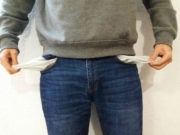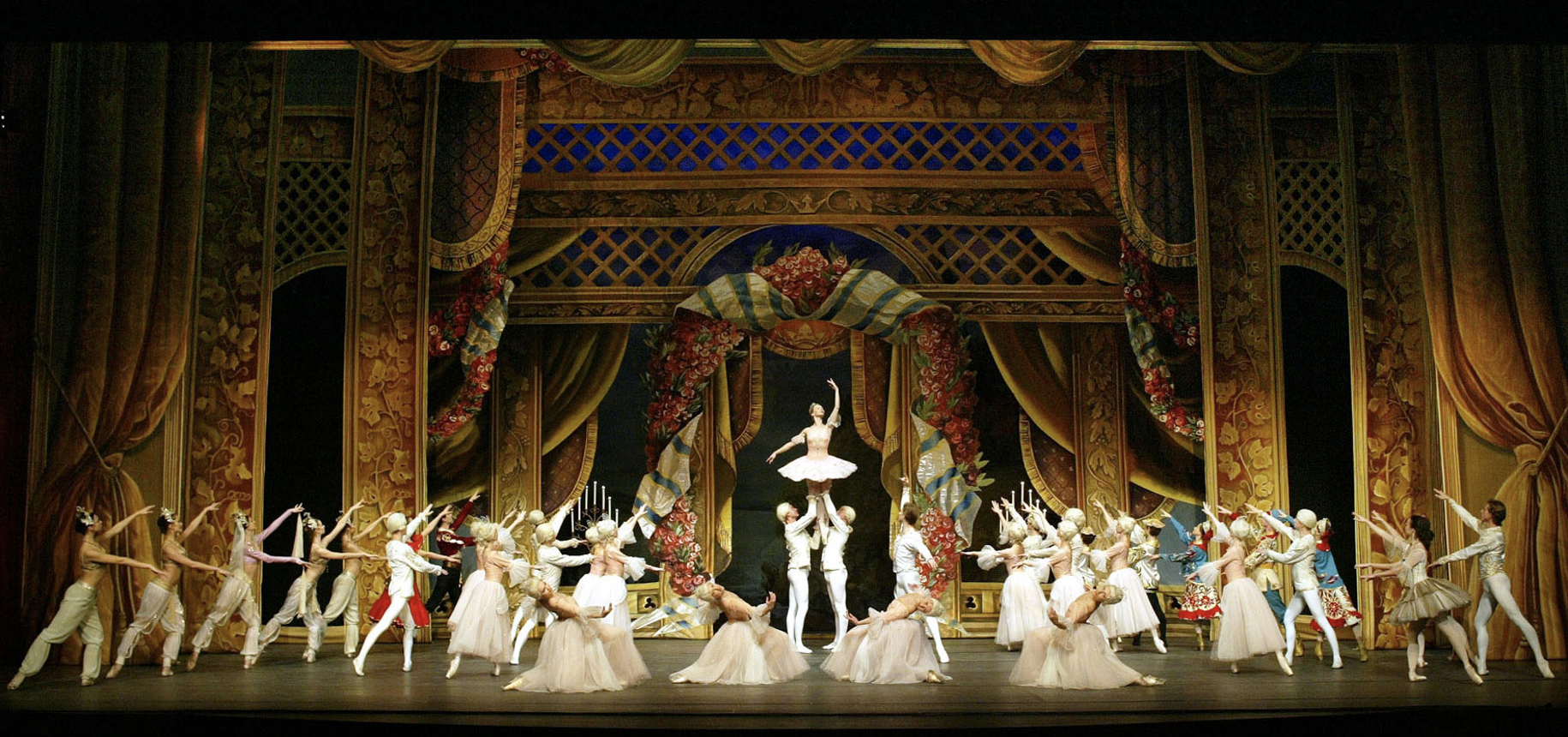December 15, 2021 – It wouldn’t be the Christmas Holiday in the western world without the
magical sounds of the Nutcracker, composed by the great Pyotr Ilyich Tchaikovsky, and
centering around Clara, a young girl who falls in love with a Nutcracker Prince and conjures an
epic battle against a Mouse King with Seven Heads.
In a recent episode of my podcast, One Symphony, I guided listeners into the fantastical worlds
of Tchaikovsky, writer and musician E.T.A. Hoffmann, and choreographer Marius Petipa,
bringing this marvelous ballet to life. I share the “tour” here for readers everywhere.
The Nutcracker was Tchaikovsky’s third ballet after Swan Lake and Sleeping Beauty, and one
of the last works of his life. According to the composer’s brother, he was “very little pleased by
the subject of the Nutcracker…. Wherefore cometh this subject matter?”
Look no further than Ernst Theodor Amadeus Hoffmann. Yes, Hoffmann added the Amadeus in
his name because of his love for Mozart. Hoffmann was a musician, writer, and Judge, and
even had been known to dabble in composition. Which of Mozart’s works does this remind you
of?
Most importantly, Hoffmann wanted to revolutionize the Fairy-tale genre. He thought that the
bourgeois household of the 19th century could use a little more creativity and imagination to
inspire its children. With these goals in mind, in 1816 ETA Hoffmann created “Der Nussknacker
und der Mauseekönig”, the “Nutcracker and Mouse King.”
Irrespective of Tchaikovsky’s eminence as single-handedly transforming the ballet genre, and in
doing so paving the way for the great ballets of Stravinsky, Ravel and de Falla, the
choreographer Marius Petipa took a micro-managerial approach to the collaboration. He was
constantly badgering Tchaikovsky with notes like “The stage is empty, Clara Returns, after the
chimes of a clock a short tremolo, then five measures of scratching mice and four measures for
their whistling, then eight measures of accelerating music ending in a chord…”
So what was the dramatic action for which Pyotr Ilyich had to write music? We’re immediately
thrown into a Christmas party at the family of Judge Silberhaus from Dumas’ telling, or it would
be Medical Officer Stahlbaum in the original Hoffmann. The guests arrive and decorate the tree
together. As the clock strikes nine, it’s time to call the children, and once the children have
settled down the Judge orders that a lively march be played. To illustrate the central importance
of the children in the drama, Tchaikovsky gives them yet more music, this time a gallop. Now it’s
time for the parents to enter, and in the same gallop, Tchaikovsky cooks up a heavy portion of
steak and potatoes as the parents plod their way in. The composer even asks the orchestra to
play “pesante” which means “heavy” in Italian.
Now we come to the crux of the matter, the life and soul of the party, the arrival of Godfather
Drosselmeier, or Drosselmayer if you’re going by the Dumas version. An important note here,
when ETA Hoffmann wrote the fairy tale, he based the Stahlbaum family on that of his good
friend Julius Hitzig and his two children Marie and Fritz. And Hoffmann certainly saw himself as
the crazy and imaginative Godfather who showers the kids with gifts. We can raise a glass for
Hoffmann’s own persona, Drosselmayer, who Tchaikovsky introduces with some intoxicated
and stodgy music.
Drosselmayer’s presents include a dancing doll that jumps out of the cabbage strudel, and a
soldier that jumps out of the shepherd’s pie! At least those nutritious dishes will balance all the
sweets from Act Two! Then, as if Fritz and Clara weren’t spoiled enough already, Drosselmayer
reveals a Nutcracker, which the kids promptly fight over before young Fritz accidentally breaks
the Nutcracker’s teeth on some unruly hazelnuts! Afterwards Drosselmayer does some quick
dental work on the poor toy, and to save the evening, the Judge promptly instructs for a
Grandfather dance to be played. This type of dance goes all the way back to the 1600s and
was played traditionally at weddings. Robert Schumann would have composed the most popular
version in 1831 in the finale of his Papillions, or Butterflies, which Tchaikovsky likely would have
studied at the piano.
The guests graciously depart. Now that everyone’s gone, before going to sleep Clara wants to
check in on her recovering patient/toy. Now all sorts of magic abounds in the air, her precious
toy beams with fantastical light. The clock strikes Midnight, all of a sudden Clara hears the
scratching of mice, they surround her, she tries to flee but freezes.
There’s something in composition called the rule of threes: you can repeat or sequence a
musical phrase or sentence no more than three times in a row. This is generally followed
among all the foremost composers. Tchaikovsky, being a Russian composer, trained as an
Austro-Hungarian-Italian, has never been known to…play by the rules. In the exposition of the
1st movement from his Fourth Symphony, count how many times he sequences or repeats the
phrase – definitely more than three! Tchaikovsky uses this same device for the Christmas tree in
the Nutcracker, which takes on epic proportions and just keeps on growing. Great background
music next time you’re decorating a tree!
Now the battle begins. The sentry wakes the rabbit drummers with a gunshot, the mice and
gingerbread soldiers prepare for battle. It’s not looking good, the mice triumph, devouring the
gingerbread soldiers, and their general, the Mouse King, finally arrives…but wait! Clara has a
trick up her sleeve, or on her foot to be more precise.. she throws her shoe at the Mouse King
and knocks him out and has saved the day! And the Nutcracker has inexplicably turned into a
handsome prince to boot! Where Have we heard that one before?
Clara enters a forest of fir trees, and the gnomes honor the prince, Clara, and all the rest of the
toys in the finale to Act One. This is Tchaikovsky at his finest.
Wait a minute.. this is only the end of the first act. We’ve only reached the halfway point…
there’s still one act to go! That’s the crazy thing about this ballet, the story has been completed
by the end of the first act. Clara and the newly transmogrified Prince have defeated the Mouse
King and his minions. So what’s left?
Many would argue the second act is where the money’s at: the enchanted palace of
Confiturembourg, that is the Kingdom of Sweets, and the arrival of arguably the most alluring
and sweet-tooth character from all the Tchaikovsky Ballets, the Sugar Plum fairy, announced by
a cymbal crash, as is the case with many other momentous junctures in the ballet.
Now after a river of rose oil swells, Clara and the Prince appear, along with twelve pages, and
the nutcracker recounts their story to all the delectable citizens of the land of sweets. He tells
the story of battling the army of mice, and how Clara valiantly stepped in to his rescue. The
Sugary Court celebrates Clara’s service to the prince.
Now we come to my favorite part of the ballet, because a good percentage of my teeth happen
to be sweet! This is the Divertissement. In the Italian and German sense Divertimento could
mean anything from a keyboard work or fantasia to music that accompanies social occasions or
Banquet music to be served with the desserts. In the French sense, which Tchaikovsky and
Petipa imply, the Divertissement is part of a stage production, normally opera but it also works
in ballet. This particularly saccharine Divertissement includes everyone’s favorite treats:
chocolate from Spain, Coffee from Arabia, albeit a decaf roast, Tea from China, and a Ukrainian
Cossack dance called a Trepak, as a tribute to the courageous efforts of the gingerbread
soldiers in battle.
Next we have a fun play on words. Mirliton is both a pipe, hence the flutes, and a pipe-shaped
pastry, hence the sweet. In la mére Gigogne et les polichinelles, we have mother Gigogne, who
is an old woman who lives in a shoe, or in some translations a woman with lots of children. They
make quite a ruckus, and don’t forget the clowns! It’s this section that makes me think
Stravinsky had to have been influenced by this orchestration, particularly the doubling of the
English Horn with the bass clarinet, while creating his own masterpiece featuring a clown,
Petrouchka.
Tchaikovsky told his friends, “it’s awfully fun to write a march for tin soldiers, and a waltz for
Flowers”. This is coming from someone who…let’s just say fun isn’t always reflected in his
letters. The Waltz is so magnificent and epic that it’s performed as a finale to the concert version
or Suite from the Nutcracker when dancers aren’t involved.
Had Johann Strauss Jr. not stolen the title, it’s of this writer’s opinion that Tchaikovsky would be
crowned waltz king of the world. He’s known for waltzing his way through life…even in his
symphonies Tchaikovsky inserts waltzes. In the Sixth Symphony, one of the few pieces written
after the Nutcracker and only weeks before Tchaikovsky’s death, he inserts a waltz where the
second, or slow movement would normally be played. This isn’t any waltz, this is in 5/4, that
means instead of the traditional 1-2-3, 1-2-3 beat, you have to count to five. I’ll leave it up to you
as to how to divide that 5. This music has certainly overdone it on the champagne!
Tchaikovsky didn’t just compose dance music. There’s a very famous account of the composer
and his colleague Monsieur Camille Saint-Saens donning their tutus and pas-de-deux-ing their
way through Georg Benda’s opera Pygmalion, or was it the Jean-Philippe Rameau version?
History is unclear, but I think they would look lovely dancing to either!
Back to the waltz of the flowers, Tchaikovsky certainly doesn’t disappoint. The fantastic
ballroom splurge gives us the opportunity to burn off those calories that we’ve devoured earlier
in the act! Speaking of Pas-de-deux’s, a friend of Tchaikovsky’s wagered that he could not write
a piece of music based strictly on the notes of a scale. Well Tchaikovsky was certainly happy to
oblige.
I can’t help but share this connection: right after Tchaikovsky composed the Nutcracker he had
a run-in with the soon to be famous composer and conductor Gustav Mahler. Mahler described
the 52 year old composer as “an elderly gentleman, very likable, with elegant manners, who
seems to be quite rich.” Mahler utilizes this “build a melody out of a scale” approach in the fourth
movement of his Seventh Symphony.
What ends up being the 2nd variation of the pas de deux you just heard, is the famous danse de
la fée-Dragée, the Dance of the Sugar plum Fairy. Its signature sound is defined by the celesta,
which was a new invention in 1886 by the Parisian builder Auguste Mustel. The always
entrepreneurial Tchaikovsky was determined to be the first composer to use the new invention,
asking his brother to “get me one of these instruments, but don’t tell anybody!” Unfortunately the
French composer Ernest Chausson beat Tchaikovsky to it, plunking the celeste into his La
tempête in 1888. Tchaikovsky was nonetheless proud to beat his colleagues Rimsky-Korsakov
and Glazunov to the punch, and would compose the quintessential music to forever memorialize
the instrument to accompany the Sugar-plum fairy’s graceful dance.
Tchaikovsky returns to what he does best with a final waltz and apotheosis where he provides a
rousing romantic finale to top off the land of enchantment, inspiration, and sweetness that both
ETA Hoffmann and the composer have copiously created for us. Mr Hoffman, looking to spark
the imaginations of children for centuries, found the perfect bedfellow in Mr. Tchaikovsky, who’s
ability to bring a story, real or imaginary, to life with music, will forever stimulate our
imaginations and creativity during the holidays and beyond. The Nutcracker becomes one of the
sounds, smells and tastes of our holiday spirit and the solstice, along with the season of
renewal, and the affirmation that life can be exactly what you create it to be.
Devin Patrick Hughes on One Symphony
























